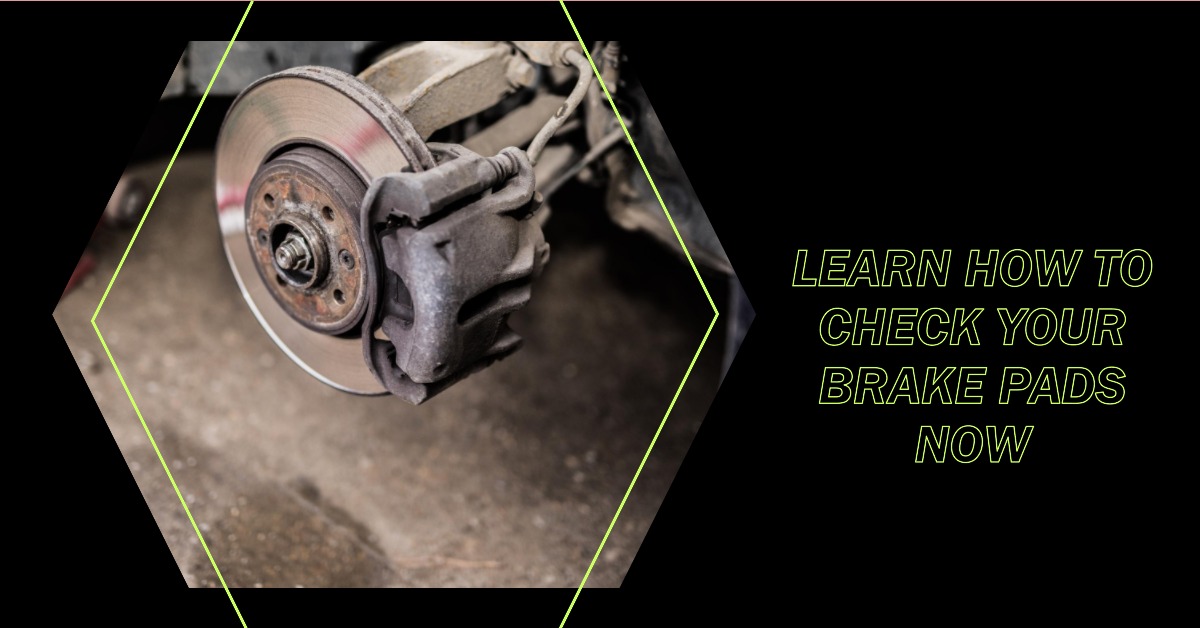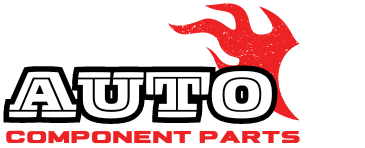To check if brake pads are worn, simply look through the wheel and inspect the thickness of the brake pad. If it appears to be less than ¼ inch thick or if there is a wear indicator slot in the center that is gone or barely visible, it is time for replacement.
Signs of worn brake pads include squealing or grinding noises, excessive vibration during braking, or dashboard warning lights. It is important to regularly check and replace brake pads to ensure proper braking performance and safety on the road.
Checking Brake Pad Thickness
When it comes to checking if brake pads are worn, one method is to observe the brake pad through the wheel. In many cars, the brake pad can be seen through the wheel. Look at it to determine its thickness. If it seems very thin, less than ¼ inch, it is likely in need of replacement, according to J.D. Power. Some brake pads have a slot in the center that serves as a wear indicator. If the wear indicator slot is gone or just barely visible, it’s time for new brake pads.
Another method is to use a small mirror or an inspection camera to check the brake pad without removing the wheel, but pulling the tire off allows for a more thorough inspection of both ends of the pads, the caliper slides, and the lines. It is important to pay attention to any high-pitched screeching or grinding noises while driving and braking as these can be signs of worn brake pads. Overall, knowing the signs of worn brake pads, such as unusual thinness and unusual noise, is essential in ensuring the safety of your vehicle.
Identifying Wear Indicators
In many cars, the brake pad can be seen through the wheel. Look at it to determine its thickness. If it seems very thin, less than ¼ inch, it is likely in need of replacement, according to J.D. Power. Some brake pads have a slot in the center that serves as a wear indicator.
On some brake pads, you might see a wear indicator slot down the center of the pad. If the slot is gone or just barely visible, it’s time for new brake pads. There may also be a metal wear indicator tab down the side of the pad. If the tab is almost touching the rotor, or it’s broken, it’s an indication that new brake pads are needed. Knowing the signs of worn brake pads is also essential – squealing or grinding noises coming from the brakes, excessive vibration during braking or a light that illuminates the dashboard are all indications that it may be time for a replacement.
If you notice symptoms of worn brake pads, you can do a rough estimate with a straw, or you can do a more precise measurement by taking off the wheel. If you see that the pads are less than a quarter-inch thick, then it may be time to have them inspected or replaced.
Front pads wear out faster than the rear, so it’s safe to replace only the front pads if the rear is still in good condition. If your car has alloy wheels with wide spaces between spokes, you can reach the caliper and brake pads without lifting the car. If you have steel wheels, alloy wheels with small spaces between spokes, or wheel covers, you need to lift the car to access the back side of the caliper.
Alternative Methods To Check Brake Pad Wear
In many cars, the brake pad can be seen through the wheel. Look at it to determine its thickness. If it seems very thin, less than ¼ inch, it is likely in need of replacement, according to J.D. Power. Some brake pads have a slot in the center that serves as a wear indicator. On some brake pads, you might see a wear indicator slot down the center of the pad. If the slot is gone or just barely visible, it’s time for new brake pads.
You can also utilize a small mirror or inspection camera to check both ends of the pads, caliper slides, and lines. However, for a thorough inspection, it is beneficial to remove the wheel. Additionally, if you notice symptoms of worn brake pads, you can do a rough estimate with a straw or a more precise measurement by taking off the wheel. Signs of worn brake pads include high-pitched screeching, grinding noises, excessive vibration during braking, or dashboard warning lights.
Front brake pads tend to wear out faster than the rear, so it is safe to replace only the front pads if the rear pads are still in good condition. When it comes to checking brake pads without removing the wheel, it depends on the type of wheels your car has. If your car has alloy wheels with wide spaces between spokes, you can reach the caliper and brake pads without lifting the car. However, if you have steel wheels, alloy wheels with small spaces between spokes, or wheel covers, you will need to lift the car to access the back side of the caliper.
Knowing the signs of worn brake pads is crucial. Squealing or grinding noises coming from the brakes, excessive vibration during braking, or a dashboard light are all indications that the brake pads may need to be replaced. Regularly checking your brake pads and addressing any wear or damage promptly can help ensure your safety on the road.
Signs Of Worn Brake Pads
To check if brake pads are worn, look at them through the wheel. If they appear very thin or have a wear indicator slot or tab, it’s time for replacement. Other signs of worn brake pads include screeching or grinding noises while driving and braking, excessive vibration, or dashboard warning lights.
If unsure, it’s best to have them inspected or replaced to ensure safety.
to replace your brake pads? One of the signs of worn brake pads is screeching noises. If you hear screeching noises when you apply the brakes, it is a clear indicator that the brake pads are worn and need to be replaced. Another sign is grinding noises and metal-on-metal contact. If you hear grinding noises while driving and braking, it means that the brake pads are very worn and the metal backing plate is touching the rotor, causing the grinding sound.
In terms of the frequency of brake pad replacement, it is important to note that front brake pads wear out faster than rear pads. So, if the front brake pads are worn out, it is safe to replace only the front pads as long as the rear pads are still in good condition. However, if you notice any of these signs or if the brake pads are less than a quarter-inch thick, it is recommended to have them inspected and replaced if necessary.
What To Do Next
To check if your brake pads are worn, look at them through the wheel to determine their thickness. If they appear very thin, less than ¼ inch, it’s time to replace them. Some pads have a slot in the center or a metal wear indicator tab on the side to indicate wear.
To check If Brake Pads are Worn: One simple way to check brake pad wear is by looking at them through the wheel. If they appear very thin, less than ¼ inch, it is likely time for a replacement. Some brake pads have a wear indicator slot in the center, while others have a metal wear indicator tab down the side. If these indicators are gone or barely visible, it’s time to get new brake pads. If you notice symptoms of worn brake pads, such as high-pitched screeching or grinding noises, excessive vibration during braking, or dashboard warning lights, it may be time for a replacement.
Checking brake pads without removing the wheel can be done if your car has alloy wheels with wide spaces between spokes. However, if you have steel wheels, alloy wheels with small spaces between spokes, or wheel covers, lifting the car is necessary to access the back side of the caliper. Prompt replacement of worn brake pads is crucial to ensure safe driving. If you are unsure about the condition or need assistance, it is recommended to seek professional help.
Checking Brake Pads Without Removing The Wheel
| How to Check If Brake Pads are Worn |
| Heading: Checking Brake Pads Without Removing the Wheel |
| Subheading: Accessibility with Alloy Wheels |
In many cars, the brake pad can be seen through the wheel. Look at it to determine its thickness. If it seems very thin, less than ¼ inch, it is likely in need of replacement, according to J.D. Power. Some brake pads have a slot in the center that serves as a wear indicator.
If your car has alloy wheels with wide spaces between spokes, you can reach the caliper and brake pads without lifting the car. If you have steel wheels, alloy wheels with small spaces between spokes, or wheel covers, you need to lift the car to access the back side of the caliper.
Knowing the signs of worn brake pads is also essential – squealing or grinding noises coming from the brakes, excessive vibration during braking or a light that illuminates the dashboard are all indications that it may be time for a replacement.
Frequently Asked Questions
a. How Do I Know If My Brake Pads Are Worn Out?
You can easily check if your brake pads are worn out by looking at them through the wheel. If they appear thin, less than a quarter-inch in thickness, it’s time to replace them. Some brake pads have a wear indicator slot or metal tab to indicate when they need to be replaced.
Signs of worn brake pads include screeching or grinding noises, excessive vibration while braking, and dashboard warning lights.
b. Can You Check Brake Pads Without Removing the Wheel?
Yes, you can check brake pads without removing the wheel. Look through the wheel to determine the thickness of the brake pad. If it is less than ¼ inch or has a wear indicator slot or tab, it may need replacement.
Signs of worn brake pads include screeching, grinding noises, excessive vibration, or dashboard warning lights.
c. What Are Three 3 Signs That Brake Pads Are Worn?
Signs of worn brake pads include thin thickness, a wear indicator slot in the center, and a metal wear indicator tab down the side. Look for these signs without removing the wheel or using a mirror or inspection camera. Other indicators include screeching, grinding noises, excessive vibration, or dashboard light illumination.
d. How Do You Tell If You Need New Rotors Or Just Brake Pads?
To determine if you need new rotors or just brake pads, you can visually inspect the brake pads through the wheel. Check if they are very thin, less than 1/4 inch, or if there is a wear indicator slot or tab that is almost touching the rotor.
You may also notice symptoms like grinding noises or excessive vibration during braking. However, for a more precise measurement, it is recommended to remove the wheel and have them inspected by a professional.
Final Words
To determine if your brake pads are worn and in need of replacement, there are a few simple methods you can try. One way is to visually inspect the brake pad through the wheel. If it appears thin, less than a quarter-inch thick, it’s likely time for new pads.
Some brake pads have a wear indicator slot or metal tab that can also indicate the need for replacement. Additionally, be on the lookout for signs such as squealing or grinding noises, excessive vibration during braking, or dashboard warning lights.
Regularly checking and maintaining your brake pads is crucial for your safety on the road.
While learning how to check if your brake pads are worn is crucial for maintaining your vehicle’s safety, knowing which brake pads to choose is equally important. If you’re specifically looking for high-quality options for trucks, don’t miss our other article, ‘5 Best Brake Pads for Trucks.
This comprehensive guide will help you select the best brake pads, ensuring optimal performance and longevity for your truck. Explore our recommendations to make an informed decision.


